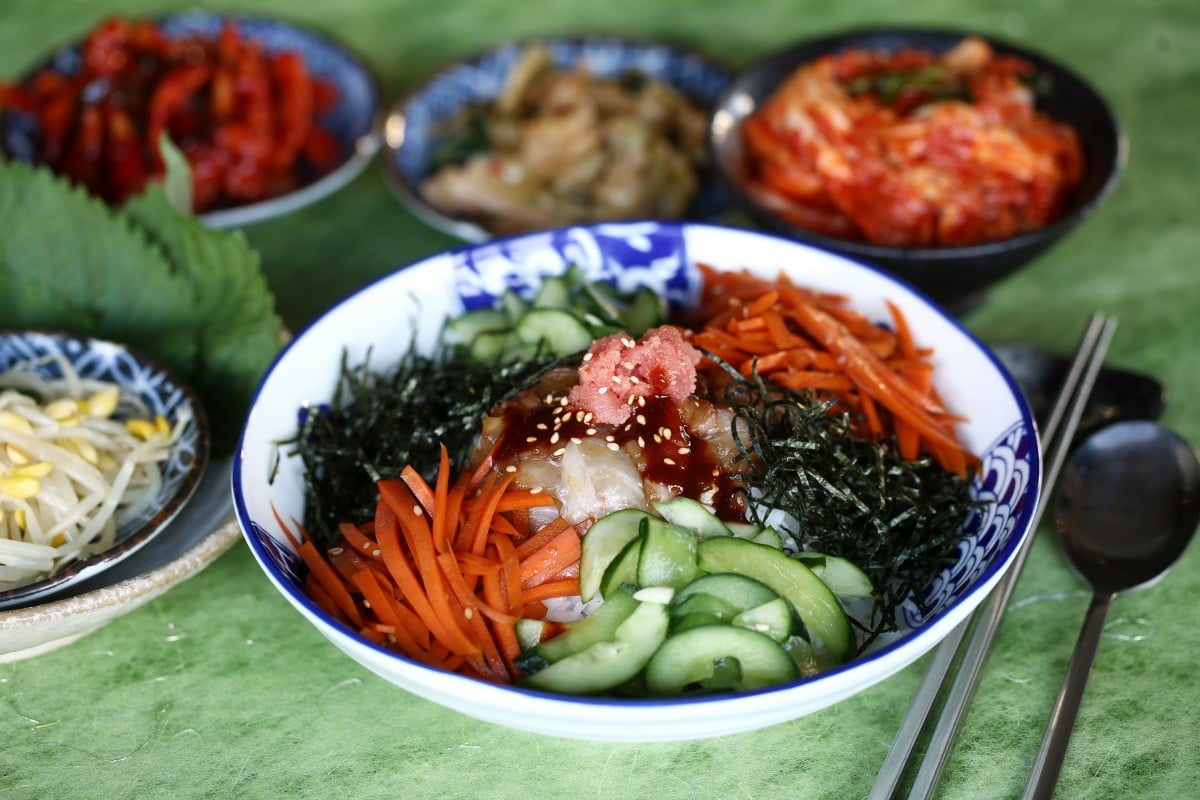
Bibimbap is comfort food – a one-bowl meal of hot rice and contrasting cool, flavourful toppings. The variations are almost endless. You can use different types of protein (chicken, beef or pork; or tofu or mushrooms to make it vegetarian) and vary the toppings of pickled or marinated vegetables.
I often make bibimbap from whatever ingredients I have in the fridge and pantry. I usually have Korean pickles on hand, but even if you don’t, it doesn’t take long to make them.
This version is a good summer dish because it is light, using raw fish, which should be very fresh and purchased from a reputable source. While most versions of bibimbap are topped with a softly cooked chicken egg, this one has fish eggs in the form of myeongnan-jeot – Korean salted pollack roe – better known by its Japanese name, mentaiko. I buy myeongnan-jeot and gochujang (Korean chilli paste) from shops specialising in Korean ingredients, where you can also find seasoned vegetables (for the toppings) and banchan (side dishes) if you don’t want to make your own. Some shops also sell perilla (wild sesame) leaves, which are good for eating with the bibimbap.
The recipes for the carrot and cucumber toppings make more than you will need for two servings, but they keep for at least a week in the fridge, which will save you some effort the next time you want to make bibimbap. For the same reason, you can also double the quantities of sauce ingredients, and keep the leftovers in a jar.
Peel the carrot, then cut it into thin matchsticks about 6cm (2⅜in) long. Bring a medium-sized pot of salted water to the boil, add the carrot pieces and blanch for 10 seconds, then drain. Spread the pieces on a tray lined with a clean, dry dishcloth, and let them air-dry. Put the carrot pieces in a bowl, mix with the sesame oil and soy sauce, then sprinkle with sesame seeds.
Trim off and discard the ends of the cucumbers, then halve each one lengthwise and slice about 3mm (⅛in) thick. Sprinkle 1tsp salt over the cucumber slices, mix well, then leave for about 15 minutes. Drain the cucumbers and blot the pieces with paper towels. Mince the garlic clove and add it to the cucumber pieces, then drizzle with the sesame oil and mix well.
Make the sauce. Mix the gochujang with the sesame oil, rice wine vinegar, soy sauce and 5g (1tsp) of sugar. Taste and adjust the seasonings as needed; if it is too spicy, add more sugar. The sauce should be a little runny; if it is too thick, stir in some warm water.
Slice the fish against the grain into bite-sized pieces about 5mm (¼in) thick. Lightly sprinkle salt over the fish and mix well, then drizzle with the sesame oil and mix again. Slit open the sac of myeongnan-jeot and scrape out the roe; discard the membrane.
Heat the rice in a microwave or steamer, then divide it between two bowls. Top each portion of rice with the fish, placing it in the centre. Spoon some of the sauce over the fish, then top with the myeongnan-jeot. Lay portions of the marinated carrots on opposite sides of the bowl, then add some cucumber slices and shredded gim. Sprinkle with toasted sesame seeds.
Serve the bibimbap with kimchi, banchan and romaine or perilla leaves. Serve the remaining sauce on the side, so diners can add more spice if they wish. Mix up all the ingredients thoroughly before eating with a spoon. You can tear the lettuce or perilla leaves into pieces and mix them in, or scoop the mixture into the whole leaves and eat it as ssam (wraps).